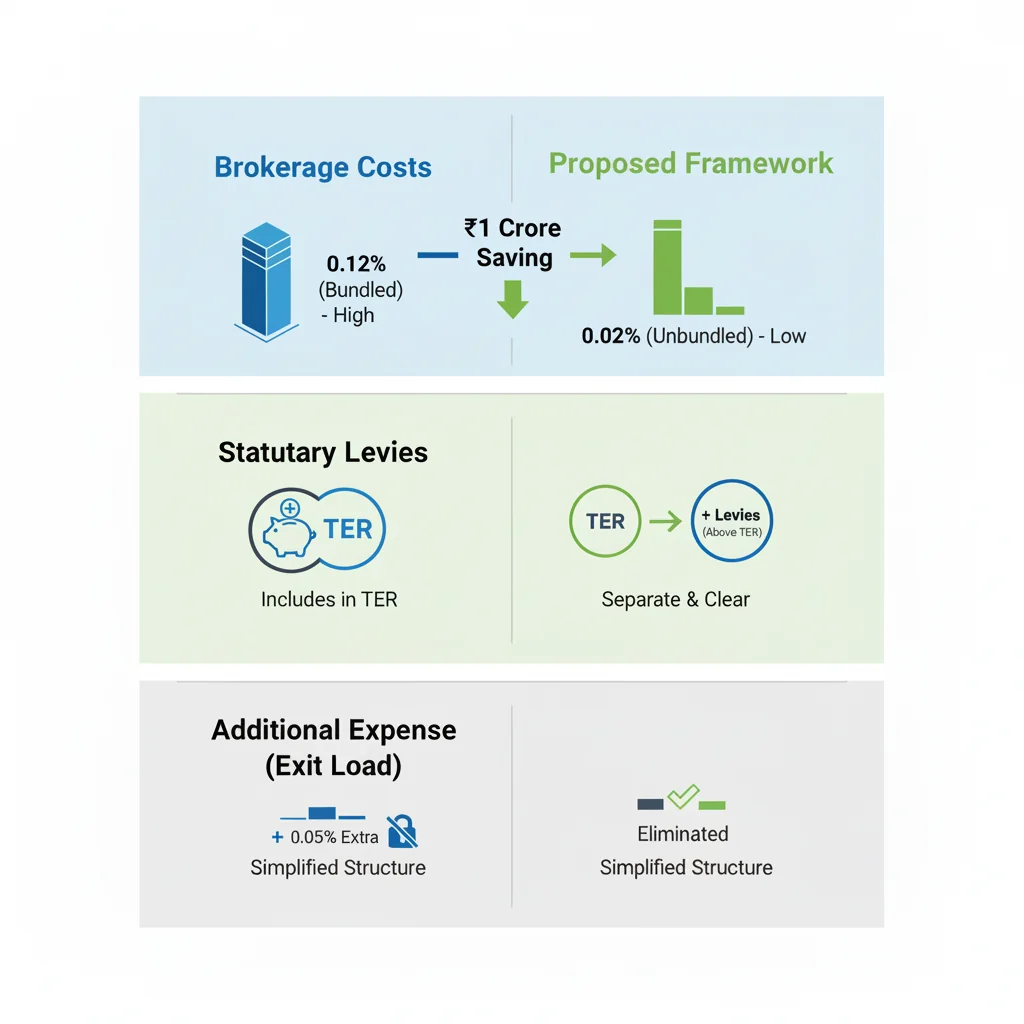
The Securities and Exchange Board of India (SEBI) has released a comprehensive consultation paper proposing a significant overhaul of the Total Expense Ratio (TER) framework for the mutual fund industry. The proposals are aimed at enhancing transparency, rationalizing costs, and improving the overall fairness of the expense structure for investors.
The regulator has outlined several key changes that would fundamentally alter how asset management companies (AMCs) calculate and charge expenses to a scheme.

Current vs. Proposed Expense Framework
The following table provides a direct comparison of the existing regulations against the proposed changes, including a numerical example to illustrate the potential impact.
| Expense Component | Current Framework | Proposed Framework |
| Brokerage & Transaction Costs | Permits brokerage and transaction costs up to 0.12% for equity trades, included within the TER. This structure allows for bundled costs, which can obscure the true cost of execution. | Proposes a significantly reduced cap of 0.02% for cash market trades. This measure aims to unbundle execution costs from research and other services. Example: For a fund executing equity trades worth ₹1,000 crore in a year, the current rules permit up to ₹1.2 crore in brokerage charges. The new proposal would cap these charges at just ₹20 lakh, representing a potential cost saving of ₹1 crore for the scheme. |
| Total Expense Ratio (TER) Structure | Statutory levies (e.g., GST, STT) are included within the prescribed TER limits, consolidating operational and tax-related expenses. | Mandates that statutory levies be charged over and above the TER, with clear and separate disclosure to provide investors with a precise view of a fund’s operational costs. |
| Additional Expense Provisions | Allows for an additional expense charge of 0.05% on schemes that levy an exit load, a provision carried over from a previous regulatory regime. | Recommends the elimination of the additional 0.05% expense provision to simplify and standardize the cost structure across all schemes. |
Key Implications of the Proposed Changes
- Impact on Asset Management Companies: The proposed caps on brokerage and the overall rationalisation of expenses are projected to directly impact the revenue and profitability of Asset Management Companies (AMCs). Market analysis following the announcement indicated a potential reduction in profit before tax for major industry players.
- Enhanced Cost Efficiency for Investors: Investors stand to benefit from lower overall costs, particularly from the material reduction in brokerage and transaction fees. Over the long term, this reduction in “cost drag” is expected to have a positive impact on net scheme returns.
- Increased Transparency and Comparability: The unbundling of statutory levies from the TER will provide unprecedented clarity on fund-related expenses. This will enable investors and financial advisors to conduct more accurate comparisons of the operational efficiency across different schemes and fund houses.
In essence, SEBI’s proposed framework aims to shift the industry towards a more equitable and transparent model. The objective is to ensure the cost structure is clear, fair, and ultimately aligned with the financial interests of the investor.


